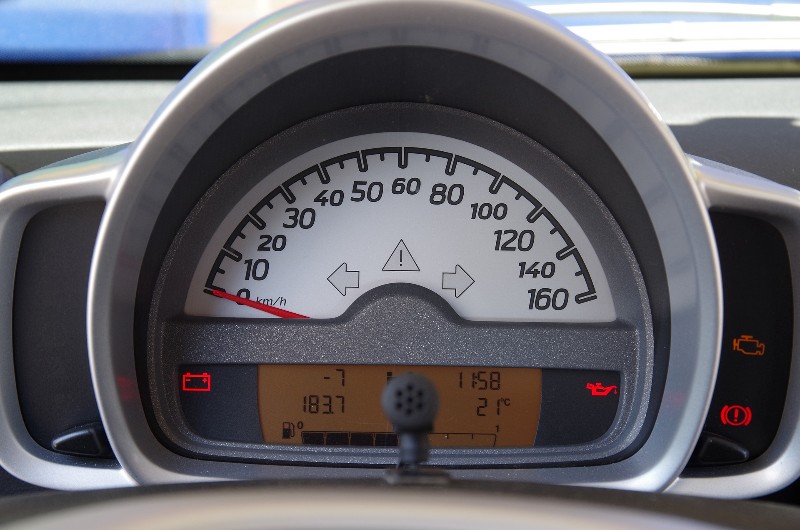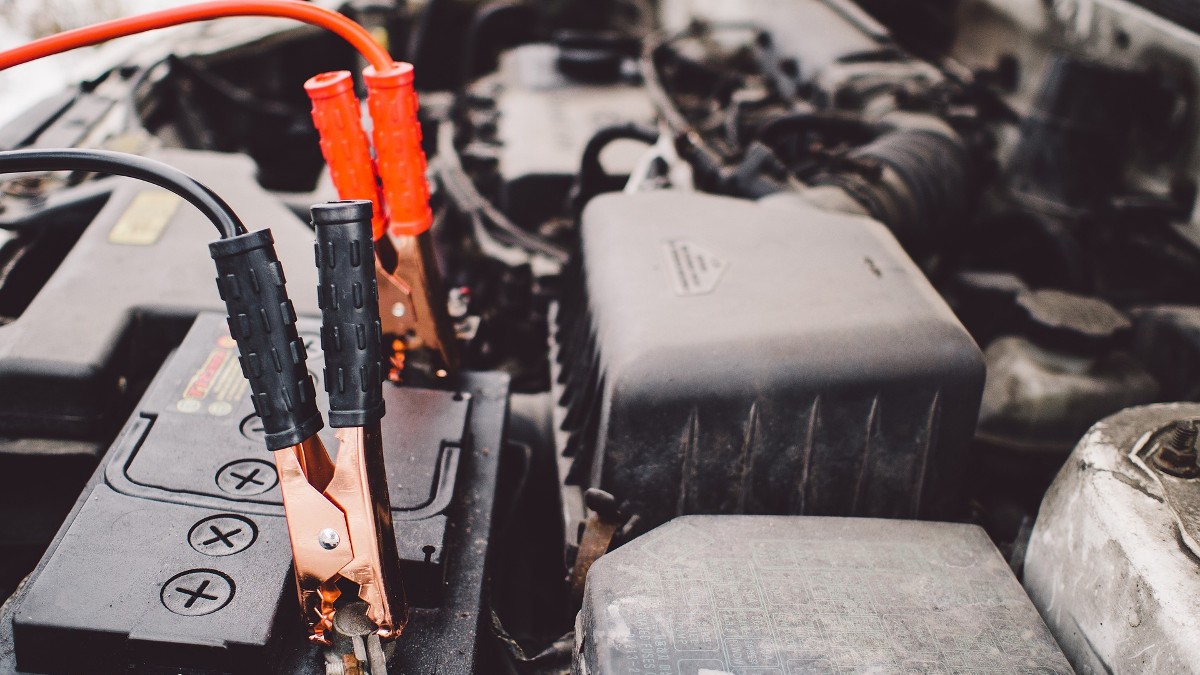Internal combustion engine cars have a 12V DC battery to power the electrical components in the car including the radio, fans, and headlights. The battery saver active message can appear on your driver information center. Here’s what it means and everything about the notification.
The battery active saver message indicates little charge left in the battery. It’s a warning that your car won’t start when you need it to. The message comes before the battery goes into power-saving mode and electrical components are going to be turned off.
Car manufacturers include alternators for charging the battery to keep it from running flat. It connects to the engine via the serpentine belt. The alternator regulates a voltage of 14.2 V to 14.7 V. This is higher than the battery voltage of 12.4 to 12.8V.
The alternator recharges the battery while restoring electric flow to various electrical components. If the car battery isn’t holding charge or supplying appropriate electrical power, the car computer displays the battery saver active message.
What Does Battery Saver Active Mean?
The battery saver active mode means your car battery has a low charge and the car is shutting off electrical components that may be draining it. It’s essential for maximizing the battery current when the battery and alternator can’t provide adequate electrical flow.
Your car’s powertrain control module works with the battery sensor to monitor the battery’s charging system. It ensures that the battery runs at maximum capacity without the risk of sudden shutdown.
What Causes The Battery Saver Active Mode?
Here are the reasons why the battery saver active message may appear.
Battery Connection Issues
Problems with the battery connections affect its output making the battery saver active message pop up. Loose or corroded connections interfere with the flow of current from the battery. Terminals covered in gunk, rust, or dirt need cleaning using a wire brush.
You can limit rust on the terminals by spraying with anti-corrosion spray or battery terminal cleaner. For loose terminals, tightening will eliminate the problem.
Bad Alternator
The alternator charges the battery while driving. However, it’s prone to overheating, wearing out, or getting loose. Any of these issues may hinder it from putting out the appropriate voltage. Discovering issues with the alternator requires connecting a digital multimeter.
This measures the battery voltage as the engine is running. You can tell the alternator is bad if it reads below 13V or nothing. Get a professional to install a new alternator and make the necessary connections.

Faulty Battery Sensor
The sensor measures battery voltage and net current supply. It determines when to increase or decrease voltage to match your vehicle’s needs. The sensor communicates to the computer making it displays a battery saver active when car accessories draw excess current.
You may also get a notification when the battery receives a negative current supply. This happens because of insufficient alternator output to match current demands from your car’s electrical accessories. A digital multimeter helps determine whether the sensor is working.
Bad Battery
A battery that can’t hold substantial power or charge over time can cause the battery saver to activate the message. So, when the message comes, check your battery. If it doesn’t discharge 12.4V or below, the engine control system responds by sending a notification.
All non-essential system components are then shut down to limit power output from the battery. Only those necessary for optimal vehicle movement remain active. The car won’t start if the voltage reading goes below 11.8V.
How Do I Fix Battery Saver Active?
The first thing to do when you notice the message is to find the source of the problem. Afterward, you need ideas on how to get it fixed before your car fails to start. Here are some suggestions.
Get A New Battery
You can check whether your battery has a problem using a battery tester. These are available in most garages. You must run off all electrical components and the ignition. Get a digital multimeter and switch to 20V DC.
Connect the black probe to the negative terminal and the red probe to the positive one. A good battery must not read below 12.4V. Anything below that means you must charge or replace the battery. Purchase a new battery compatible with your car by checking its type and specs.
Replace The Alternator
If the battery is fine, consider testing the alternator. First, switch off all electrical components and the engine. Get a multimeter and set it to 15 to 20V DC. Remove any grime or dirt from the battery terminals.
Connect the black probe to the negative terminal and the red probe to the positive one. It must read about 12.6V. Leave the connections and start the vehicle so it reads about 14.2 V to 14.7 V. The alternator is undercharging if you notice a reading below 14.2V.
A reading over 14.2 V means the alternator is overcharging. Turn on electrical components such as lights, radio, or AC to see whether the voltage drops below 13 V. Turn off the engine and check the reading again if the alternator is working when the reading is more than 14.6 V.
Fix Defective Battery Connections
Damaged or malfunctioning cables may cause the battery saver active mode to turn one. The best thing is to replace the connections. It requires removing the old connections and installing the new ones and then making the appropriate connections.
Replace Malfunctioning Sensor
You must have a professional mechanic check the sensor to see whether it needs replacing or repair. The mechanic will first check the battery to ensure that it’s in good working condition and functioning properly.
Should I Get A New Battery When the Message Comes?
You don’t need a new battery when the battery saver active comes on. It means its voltage has dropped below the appropriate level. The issue may result from a bad battery, damaged connections, or a bad alternator. Making appropriate repairs or replacement fixes the problem.
Can I Drive With Battery Saver Active On?
It’s not a good idea to drive when the notification comes on. Driving may cause further damage because the message warns of pending issues with the battery. A good idea is to have the problem fixed as soon as possible and diagnose the cause.
The car is likely to shut down within 20 minutes to two hours if you keep driving. This isn’t a good idea, especially when driving a long distance. Fixing the problem ensures that you continue with your journey without any disturbances.
Wrapping Up
A battery saver active on your driver information center indicates a problem with your battery. It may not be providing sufficient power for all electrical components in the car. This may be resulting from a bad alternator or old battery. Cleaning, repairs, or replacement can fix the issue.

